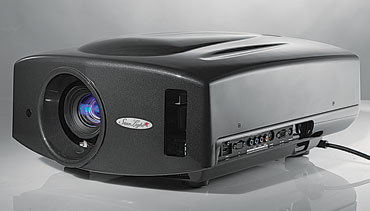Test Report: Dreamvision Starlight LCoS Projector Page 3

PERFORMANCE
My first impression of the Starlight2’s performance was a powerful one indeed. The first actual image (i.e., not a test pattern) that I watched on the Starlight2 was from Ultimate Fighting Championship: Best of 2008, which I loaded because I wanted to see how the Crystal Motion processing worked with 1080i video. Not being particularly fond of grunting, tattoos, or real human blood, I usually put this disc on only for quick tests. But I was stunned by the crowd shot that opened one of the fights. It seemed as if every single member of the audience was visible. The brilliant colors of the venue’s lighting really jumped out. Even though most of the picture was fairly bright, none of the intricate details of the darker parts of the image was lost.
The eFFects of the Crystal Motion processing were mostly subtle — but that’s both good and bad. It’s good because the processing produced less of the annoying “video look” that many anti-judder algorithms produce with 1080p/24 material (such as most movies). It’s bad because the motion isn’t as smooth as I’ve seen from some anti-judder processing. The effect was also subtle on 1080i material; it smoothed motion a bit, but the effect was comparatively diffcult to discern.
As with other LCoS projectors I’ve recently tested, the contrast here was stunning. You get this contrast without having to rely on an automatic iris, special “deep-black” modes, or any other such trickery. Just set the brightness and contrast as you usually would, and you’ll get blacks as deep as those offered by any other projector I’ve tested. The Schneider is definitely a step up from other anamorphic lenses I’ve tried. Unlike those lenses, it barely distorts the picture at all. I could see a little bit of bowing at the top and bottom of the picture, but the error was on the order of 0.5% — about one-sixth the picture distortion I’ve seen with less expensive lenses. Although the lens reduced peak white levels somewhat, it didn’t reduce contrast much (and the Starlight2 has plenty of contrast to spare, anyway). Watching the opening battle scene in Terminator Salvation spread out across my 2.35:1 screen was a treat. Detail was excellent, contrast was extraordinary, and fl aws in the picture never once distracted me (something I can’t say about lower-priced anamorphic systems I’ve tried). The fact that I could get such a great image merely by activating the TH-Pro mode made it all the more satisfying.








































